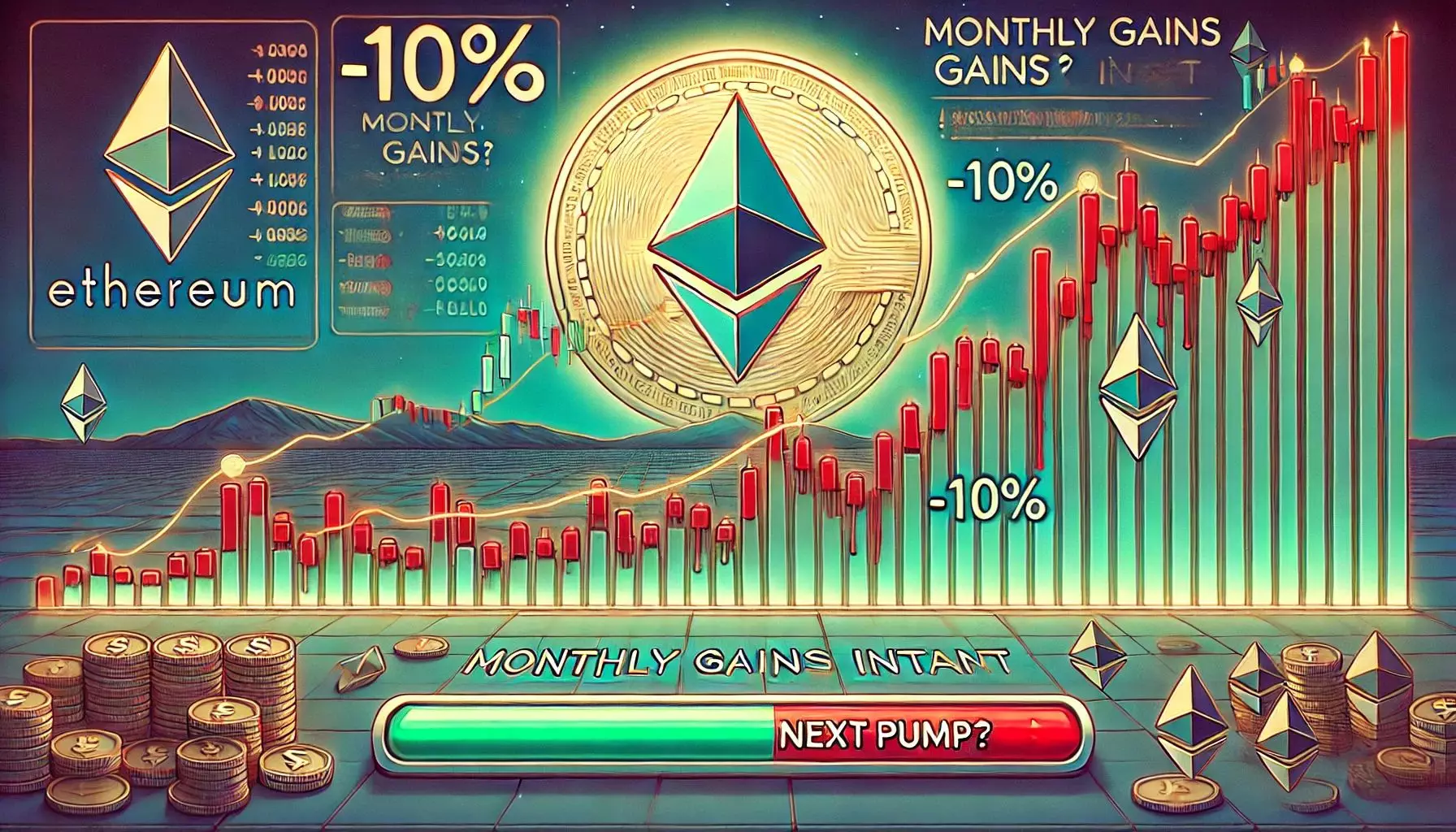The world of cryptocurrency is notorious for its opportunistic energy, and Ethereum (ETH) perfectly encapsulates this duality. As it navigates a persistent range between key support and resistance zones, the Ethereum ecosystem stands as a beacon for both seasoned investors and newcomers alike. Unlike many cryptocurrencies that seem susceptible to every market whim, ETH appears resilient, confidently holding above the $2,500 mark even amid macroeconomic pressures that plague traditional financial markets. Critics may argue that such stability is merely a respite in an otherwise turbulent sea, but for those who value accuracy and relevance in financial news, it’s evident that Ethereum’s potential may lie just beneath the surface.
The Role of Analysts in Crafting Perception
The discourse surrounding Ethereum is often bolstered by analysts who dissect price actions with surgical precision. In recent commentary, well-respected analyst Ted Pillows remarked upon Ethereum’s robust monthly performance, wherein it surged approximately 50% despite experiencing short-term corrections. This volatility doesn’t deter proponents of Ethereum; rather, it signifies a strategic accumulation phase. Investors are encouraged to consider the measurements of fundamental data along with price movements, as both form the bedrock for future projections. Ethereum’s potential breakout above $2,700 isn’t merely speculative; it is grounded in a palpable wave of sentiment that could instigate broader market momentum.
However, it’s essential to challenge the often unquestioned narratives posited by analysts. Their forecasts and analyses can influence the very markets they observe, shaping public perception in ways that sometimes skirt known biases. The narratives we consume are far from impartial; thus, as investors, it becomes imperative to dig deeper, cultivating our understanding to either validate or contest such predictions.
Institutional Confidence: A Double-Edged Sword
One of the more striking developments in the realm of Ethereum has been the uptick in institutional inflows, particularly noting how firms are gearing up to invest more than $1 billion in acquiring ETH. This signals a long-term confidence in the asset, particularly as the potential for Ethereum to lead an altseason gains momentum. Yet, this phenomenon can wield a double-edged sword. Institutional involvement may fuel an uptick in price, but as any center-right observer would note, such behavior could also pave the way for increased volatility driven by the very entities that pushed the price in the first place.
The economic landscape is rife with geopolitical tensions and rising Treasury yields that could seemingly sabotage predictions of stability. However, rather than letting such external factors deter optimism, savvy investors would be wise to stay attuned to the underlying trends. The mere presence of institutional investment is not foolproof; it must be coupled with a broader market strategy that factors in not only ETH’s trading habits but also macroeconomic trajectories that could impact investor sentiment.
Beyond the Charts: The On-chain Signals
As we sift through the intricate details that dictate Ethereum’s trajectory, we must consider on-chain signals that paint a fuller picture of demand dynamics. Current indicators suggest sustained investor interest and confidence, particularly as Ethereum’s smaller market cap allows individual investments to exert a disproportionate influence on its price. Yet, while on-chain analytics serve as a compass, they must also be weighed against the backdrop of external volatility.
Investors who strictly rely on technical analysis are often criticized for missing the broader narrative. Ethereum is not merely a trading card; it’s an evolving component of a digital economy. To borrow from liberal sentiment, the value of Ethereum encompasses not just market mechanics but also the profound implications it carries for democratization and innovation in finance and beyond.
Key Resistance Levels: A Catalyst for Change
Ethereum stands at a critical juncture, poised to shatter the $2,700–$2,850 resistance zone that could mark a new chapter in its market narrative. Technical analysts suggest that a decisive break above this level could embolden bulls and propel ETH towards a test of the elusive $3,000–$3,200 range. Therein lies the heart of the matter: dissecting every twist of the chart for clues holds merit, yet one must not dismiss the human element in this equation.
Market sentiment is profoundly influenced by psychology. The morale of traders, the anticipatory nature of speculative bubbles, and the general appetite for risk all interweave to shape the perception of value. Short-term fluctuations can breed fear, yet an approach grounded in the principles of center-right liberalism espouses optimism. It posits that even economic storms can clear to unveil opportunities for calculated investment and gain. Amid a volatile backdrop, Ethereum persists; it stands resilient, aptly positioned to lead the way forward.
Throughout this exploratory journey of Ethereum’s landscape, the conviction remains: it’s not just a matter of numbers on a screen; it’s an evolving narrative that intertwines our economic future with individual agency and institutional influence. As the world watches, Ethereum’s fate hangs in the balance, a microcosm of the broader battle between innovation and hesitation.
















Leave a Reply